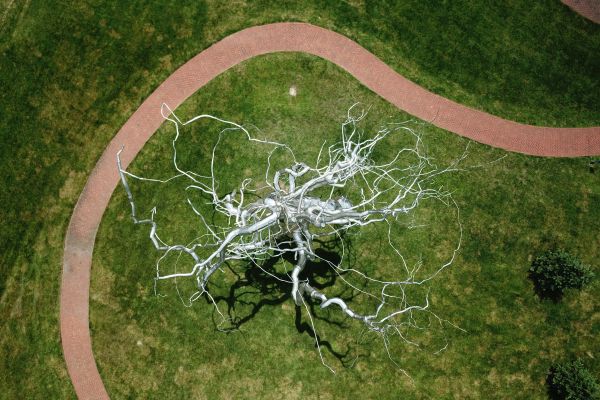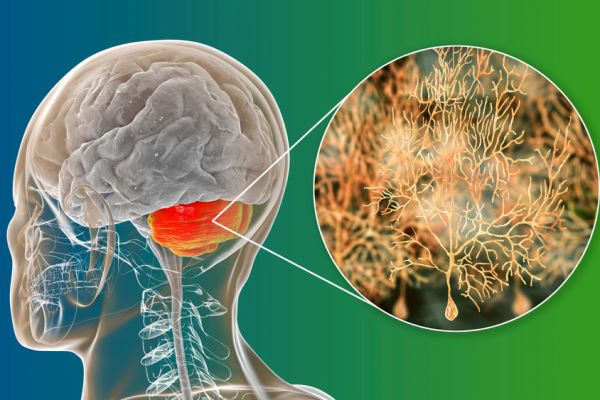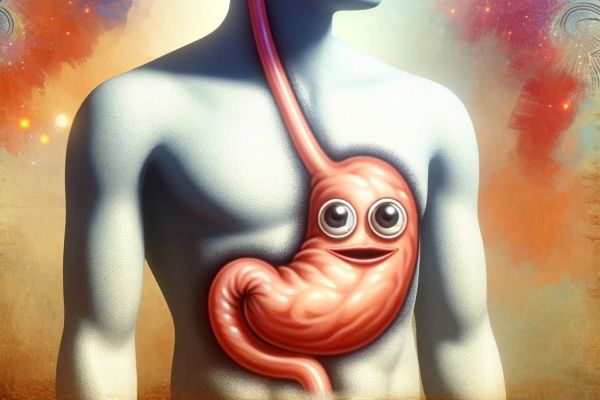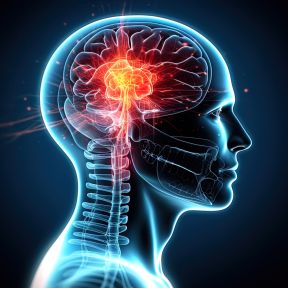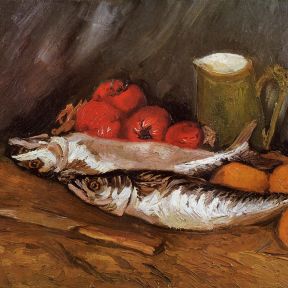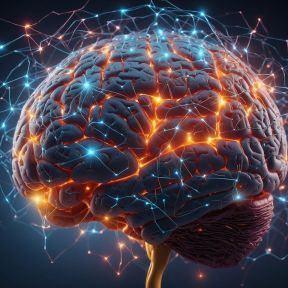Areas of the Brain
The human brain, as the seat of mental life—from the most complicated intellectual processes down to routine and unconscious bodily control—is necessarily enormously complex.
The largest part of the brain is the highly-evolved cerebrum. The topmost portion is divided into two hemispheres, each with four lobes, within which are many other subdivisions. The cerebral cortex forms the outer layer of the cerebrum. Nested deeper within the brain are essential structures such as the basal ganglia, the amygdala, and the hippocampus. Toward the bottom of the brain are more primitive structures, including the cerebellum and brain stem. These also fulfill critical functions.
Running through parts of the brain are a dozen pairs of cranial nerves, which link the brain directly to muscles and sense organs in the head, neck, and upper body. The brain also contains four interconnected spaces called ventricles, which produce and are filled with cerebrospinal fluid. This fluid is distributed to the exterior of the brain and to the spinal cord, where it provides a cushion against physical impact and helps maintain normal function.
The brain and spinal cord together form the body’s command structure: the central nervous system. The peripheral nervous system extends body-wide, encompassing nerves that branch out from the spinal cord and the brain.
On This Page
The cerebrum is physically divided into two halves—the left hemisphere and right hemisphere—and the functions of which are specialized in certain ways. Both hemispheres work closely together, communicating via a bundle of nerve fibers, the corpus callosum, that forms a bridge between them.
The left hemisphere controls the movement of the opposite (right) side of the body. Among the tasks for which it is specialized are the ability to speak and aspects of language comprehension, though language ability involves both hemispheres. Broca’s area and Wernicke’s area, parts of the brain that are both linked to language, are typically located in the left hemisphere.
The right hemisphere controls the movement of the left side of the body. The right hemisphere is specialized relative to the left in some aspects of spatial processing, including that of three-dimensional relations between objects. It also appears to be especially important for processing non-literal aspects of language, such as metaphors.
While each hemisphere has certain tasks to which it is especially tailored, broad mental activities and qualities such as perception, creativity, and reasoning are handled by both hemispheres together. (For more, see Left Brain - Right Brain.)
![Wikimedia Commons [Public Domain] Wikimedia Commons [Public Domain]](https://cdn2.psychologytoday.com/assets/styles/manual_crop_1_1_180x180/public/2021-01/brain%20lobes.jpg?itok=YUplVOIZ)
The cerebral hemispheres are commonly mapped out based on four large regions—the frontal lobe, the temporal lobe, the parietal lobe, and the occipital lobe—with one of each on either half of the brain.
- The frontal lobes form the front of the cerebrum, starting directly behind the forehead. Important for executive functioning, the frontal lobes are involved in decision-making, attention, producing voluntary movements (controlled by the motor area of the frontal lobe), and speech, along with various other voluntary and involuntary abilities.
- The parietal lobes are located behind the frontal lobes. The parietal lobes contain the primary sensory areas, which are involved in processing information about taste, touch, temperature, and movement. The parietal lobes also play a role in language processing, including reading.
- The temporal lobes sit on the sides of the brain. They contain the primary auditory cortices and process information from the ears; they also work with the occipital lobes to process visual information. The temporal lobes are heavily involved in learning and memory. The medial temporal lobe contains important structures including the hippocampus and amygdala.
- The occipital lobes form the back section of the cerebrum. They contain the primary visual cortices and are crucial for vision.
The cerebral cortex is the thin, outermost layer of the cerebrum, extending across all the brain’s lobes. Just 1.5 to 5 millimeters in width, it is composed of the neurons that make up the brain’s “gray matter” and handles much of the brain’s work. (The gray matter of the cortex is interlinked with the rest of the brain by nerve fibers that make up the brain’s “white matter.”)
The cortex’s distinctive, wrinkled appearance is due to its various ridges (gyri) and grooves (sulci). These provide for a larger total surface area within a condensed space—and hence more room for neurons—than would a totally smooth layer of brain cells.
Buried in the core of the brain are a collection of structures that serve a variety of important functions. Some of these essential components are:
- The thalamus is akin to a relay station, receiving signals going to and from the cerebrum and other parts of the nervous system. It is an integral part of the system of sensory processing, but is also involved in movement, emotion, memory, and other functions. The brain contains two thalami, one on either side.
- The roughly pea-sized hypothalamus, below the thalamus, plays a role in bodily regulation, including the control of body temperature, sleep and wakefulness, hunger, and the release of the stress hormone cortisol and other hormones. The hypothalamus produces a number of hormones itself, including oxytocin, dopamine, vasopressin, and others. It is directly connected to and influences the functioning of the pituitary gland, which releases various hormones into the bloodstream.
- The amygdala is an almond-shaped structure that has a major role in producing emotional responses. It also helps to integrate emotional aspects of experience into memory and to produce fear-based memories and learning. There are a pair of amygdalae in the brain. The amygdala and its neighbor the hippocampus are two major components of the limbic system.
- The hippocampus, named for its resemblance of a seahorse's shape, is central to the creation and filing-away of memories. It is also involved in spatial processing and the ability to find one’s way around. There are two hippocampi in the brain. Along with the amygdalae, they are major parts of the limbic system.
- The clusters of neurons called the basal ganglia are important for coordinating physical movements, including habitual behaviors.
The cerebellum (Latin for “little brain”) is packed with 50 percent of the neurons contained in the whole central nervous system. It is located at the rear and toward the bottom of the brain, beneath the cerebrum and behind the brainstem. Like the larger cerebrum, it contains two hemispheres of its own, each containing an outer layer of grey matter and an inner area of white matter.
The cerebellum plays a central role in the control of the body’s movements and in the learning of physical tasks. Based on signals from the inner ears and the muscles, the cerebellum enables the body to maintain balance and posture.
The brain stem, situated at the bottom of the brain, is made up of three main parts: the midbrain, pons, and medulla oblongata.
- The midbrain is the highest part of the brain stem. Among other functions, it is responsible for certain reflexes, helps to process visual and auditory information, and contributes to the control of eye movement as well as other body movements.
- The pons (from the Latin for “bridge”) is a base for connections between different parts of the brain, including between the cerebellum and the cerebral cortex as well as between the cerebellum and the medulla. It contains the endpoints of several cranial nerves that link the face region and the brain.
- The medulla oblongata (or medulla) is the lowest part of the brain stem. It is important for the control of basic, involuntary functions including breathing, digestion, heart rate, and certain reflexes (such as the gag reflex and sneezing). It is directly joined with the spinal cord and helps to carry signals from the spine to the rest of the brain.
